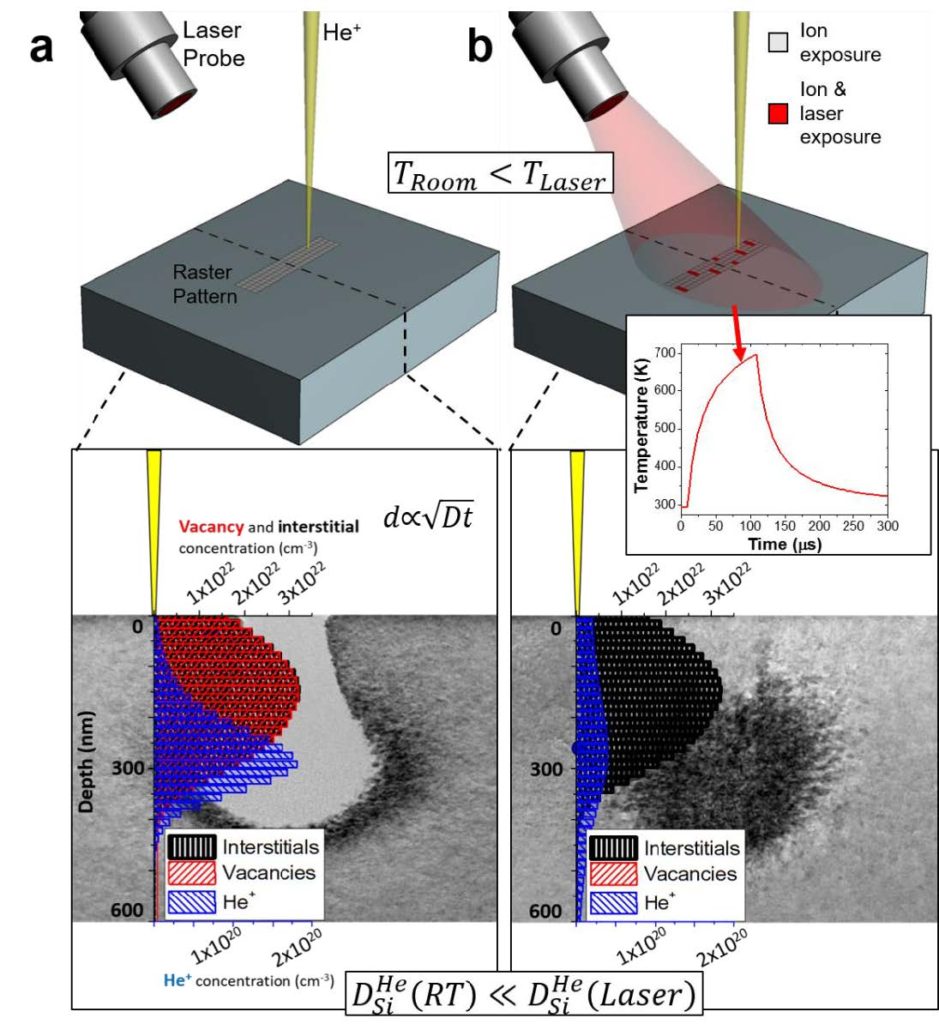In Situ Mitigation of Helium Beam Damage
Teams from University of Tennessee, Oak Ridge National Lab, and Intel Corporation demonstrated in situ mitigation of helium beam damage using the Waviks Vesta. Their work was published in Small.

Figure 1. Schematic of laser-assisted sub-surface damage mitigation. Schematic of helium ion exposures (a) without and (b) with pulsed laser-assist to photothermally enhance implanted ion diffusion and defect annihilation. Grey pixels in the raster pattern represent pixels irradiated solely with He+ whereas red pixels are simultaneously irradiated with the laser and He+. Cross-section slices show the helium, vacancy and interstitial concentrations overlaid on experimental TEM cross-sections illustrating photothermally enhanced diffusion of He+ and vacancies with the pulsed laser-assist strategy of a photon/ion flux of 1.3x106. Inset in (b) is the simulated time-temperature profile of a single 100 s laser pulse irradiated on Si.
Focused helium and neon ion beam processing has recently been used to push resolution limits of direct-write nanoscale synthesis. The ubiquitous insertion of focused He+/Ne+ beams as the next-generation nanofabrication tool-of-choice is currently limited by deleterious subsurface and peripheral damage induced by the energetic ions in the underlying substrate. Here, we demonstrate the in situ mitigation of subsurface damage induced by He+/Ne+ ion exposures in silicon via a synchronized infrared pulsed laser-assist process. The pulsed laser-assist provides highly localized in situ photothermal energy which reduces the implantation and defect concentration by greater than 90 %. The laser-assisted exposure process was also shown to reduce peripheral defects in He+ patterned graphene, which makes this process an attractive candidate for direct-write patterning of 2D materials. These results offer a necessary solution
for the applicability of high resolution direct-write nanoscale material processing via focused ion beams. This work was done with the Waviks Vesta in situ photothermal heating accessory.
Reference:
Stanford, M. G., Lewis, B. B., Iberi, V. , Fowlkes, J. D., Tan, S. , Livengood, R. and Rack, P. D. (2016), In Situ Mitigation of Subsurface and Peripheral Focused Ion Beam Damage via Simultaneous Pulsed Laser Heating. Small, 12: 1779-1787.
